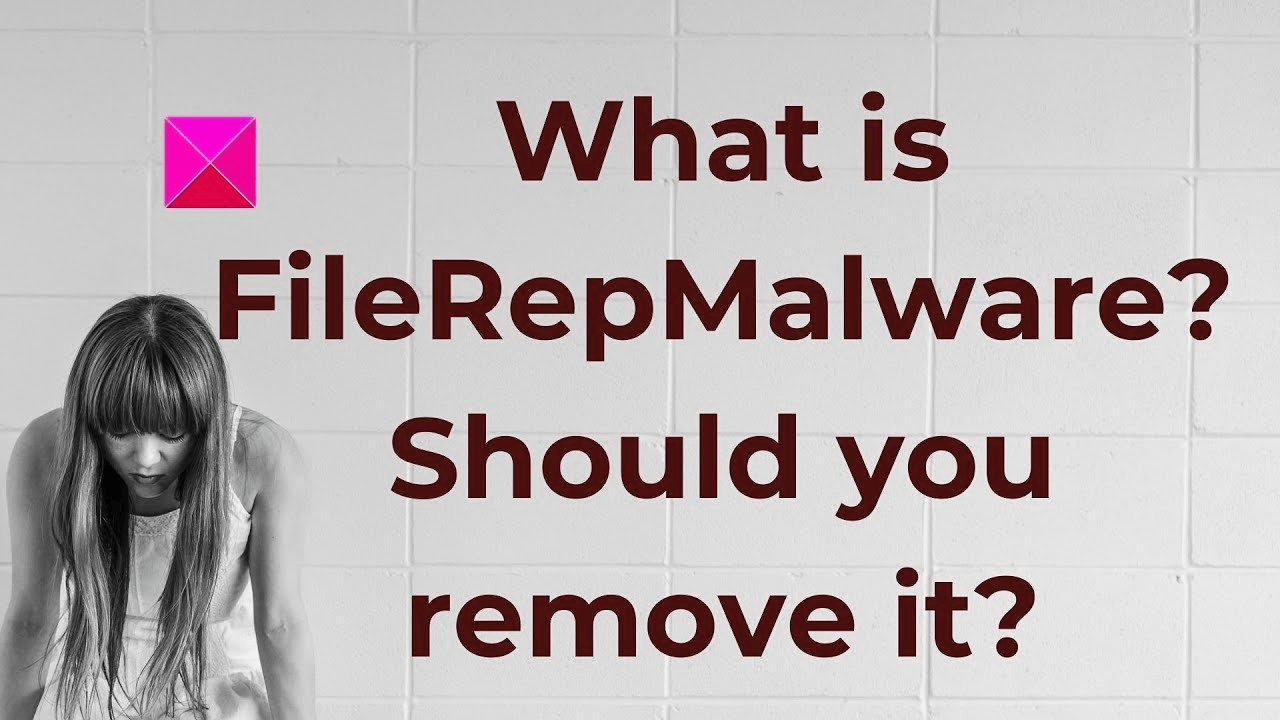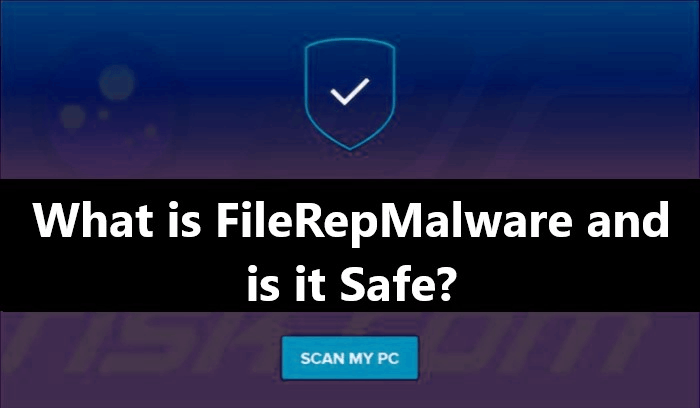FileRepMalware is a new file extension used by cybercriminals to fool users into installing malware on their computers. New file extensions are not uncommon for cybercriminals, but they are generally not as successful as other methods, like phishing.
Moreover, FileRepMalware is a relatively new file extension, and there aren’t many files available that use this extension. This means that most people would probably be able to identify it as suspicious.
FileRepMalware: information and removal guide
FileRepMalware is a malicious application that sneaks onto your computer and does all sorts of unpleasant things to your machine. It’s a highly dangerous infection that can cause all kinds of problems on your computer. It can also lead to identity theft because it can steal all kinds of personal details from your computer.
Here’s what you should do if you find a suspicious file extension. You should do the first thing if you find a suspicious file extension to revoke the extension. This will prevent the malicious application from appearing in search engines or opening a new browser tab.
To do this, right-click on the file and choose Properties. In the Properties window, click the Extensions tab and then the Uninstall button. Sign out of your Microsoft account before applying for the extension. Next, if you find another suspicious extension, you should revoke the already installed extension.
Remove registry key
If you can find the malicious extension in the extensions section of your Control Panel, you may need to locate the registry key where the extension is stored and then reinstall it manually.
When trying to reinstall an extension that’s already installed, you may lose your data. Your downloaded extension may still be using the older, vulnerable, or outdated extension method that it was downloaded to. To get around the privilege escalation protection of some antivirus programs, criminals can bypass random security processes.
In some computer configurations, the security provider that the malware checks for has a low-security certification, meaning that you have only very low Security. You may be subject to malware attacks even if you’re using the most up-to-date security software. To remove a suspicious or malicious extension from your computer:
- Follow the below guidelines. While it’s acceptable to view suspicious images on many websites, it’s unlikely that they come with malicious content.
- Check to make sure to allow photos or videos if they contain sensitive or compromising content.
- Always be cautious when clicking on links that you realize contain a video.
What are file extensions?
File extensions are the letters at the end of a file’s name. For example, if you have a file named myfile.jpg, its extension would be .jpg. File extensions tell you what kind of file you’re looking at. For example, if the file extension is .doc, you’re looking at a Microsoft Word document.
One website that appears to be a senior leadership training website is displaying a malicious image file. This image appears to come from a company called “System Up.” They claim that this operation is part of a project to help company leaders access information from within their company on their smartphones.
As you can see in the image above, the page displays a scrambled image, and many text fields have no text in them. How does this help the website? Well, when you send an email with this attachment associated with your email address, it will mess with your settings, which opens the door for hackers to gain access to your Google Drive and Dropbox.
Microsoft Account
The best way to prevent this kind of attack is to know how your computer belongs to you. To do that, you’re going to have to go to Control Panel. Start by clicking on the Start button at the bottom of the screen. Then click on Programs and Features. Then in the Programs and Features area, you’re going to want to select Security. Look for the “Microsoft People app,” which is located under Microsoft Account.
The answer to whether the computer belongs to you is “Yes,” and not “No.” If the computer is not yours, the attack is nearly impossible to pull off. Suppose you notice that a website constantly causes you to go to a suspicious website because of its repetition in your email.
In that case, it probably isn’t your bank or social media account. The same thing applies to virus and spyware websites. If you see a site constantly redirecting you to this website, it probably isn’t your bank or social media account.
Why are file extensions used?
File extensions are used to identify the type of file. For example, the .jpg extension indicates that the file is an image (JPEG image). The .doc extension means that the file is a Microsoft Word document. File extensions are not case-sensitive. For example, the. JPG and. Jpg extensions are the same.
Although people usually only associate malicious websites with.jpg and other common image file extensions, downloads from these sites can lead to infection. Chrome automatically downloads the most popular file extension by default, called.ico. While.ico does not seem to pose any particular security risks. It’s usually not a good idea to ignore file extensions downloaded from dubious sources, especially if a website claims to be safe.
To avoid downloading malicious files, navigate to your Extensions page. To see all the extensions installed on your browser, click on the Windows / Google Chrome menu button, and choose Manage Extensions. One of the Extensions that could affect your Security is Show-ALL-Extensions. This setting will display all your extensions, regardless of whether or not they are safe to install.
However, it is recommended to uncheck extensions you don’t need as frequently. The privacy-focused extension Ghostery recommends not installing extensions after six months. If you feel that the extension you downloaded is safe, but you do not manually update it, leave it alone. Open the Extensions page in your browser by navigating to your extensions page.
Pro Tip
If you are using Microsoft Edge, you’ll see a message indicating that you need to disable some extensions, like Adobe Flash. Because Google Chrome does not have Adobe Flash, you’ll need to disable or uninstall the Adobe Flash.exe extension before adding Google Chrome to your extensions page. One of the most popular methods for infecting computers with malware is phishing. Phishing emails are designed to trick the recipient into clicking on a link that downloads and installs the malware.
How to identify FileRepMalware files
When it comes to identifying FileRepMalware files, you should first know what to look for. Here are some of the most common signs to look for to identify if you have a FileRepMalware file: You should look for the word “reputation” in the file name.
If there’s nothing else, then this probably means the user has never reported the file before. Just because you haven’t seen a file before doesn’t mean it hasn’t been downloaded or come from public places, like a public WiFi network. A lot of the FileRepMalware are adverts.
They typically show up as advertisements in Microsoft Edge, Chrome, or Firefox. You can usually block all advertisements with some extensions. The most popular ones to try are NoAds, AdBlockPlus, or block origin. But there are other adblocking extensions.
To block advertisements
you should check what type of advertisement your browser supports. Depending on the browser, it can be essential to know which ad-blocker or filter your browser supports the most. If you haven’t seen an advertisement after doing some reviews, you can spread the word about removing it. If you can handle the possible consequences, the more effective way would be to delete the file yourself.
It’s not that difficult to find instructions on how to do this. However, depending on the severity of the file, it could be worth waiting a few days and check if it has changed. If it has changed, then you should delete the file from your computer. Once you do, you can reinstall your preferred browser and restore the original functionality.
You should also make sure that the extension is not tracking you. Some extensions can’t read metadata about your behavior since it’s more about your behavior than a tracker. For example, if you connect to a public WiFi network without a password to see if your friends are also there, fileRepMalware will likely notice this and see your password.
How to protect yourself from malware downloads in the future
Malware is a type of software that can harm your computer when you download it, so it’s important to take precautions when you’re downloading files from the internet to your computer. First, make sure that you’re downloading from a trusted site.
Read the website’s privacy statements to make sure you’re downloading from a place that isn’t trying to harm you. When you’re downloading files, you want to make sure that you’re downloading the right file types. There are two types of files you’ll want to be aware of when downloading files from the internet.
You can see how the “or.exe” file extension is different from the other file types on the page in the image above. That’s because some websites add special files that may be perceived as suspicious. Some of the websites may call some of the files extensions.scr,.jar,.sav, or.log, for example.
Important
It’s important to go through the website and make sure you download the right file types. You’ll download different files depending on the destination of the website. Check out this YouTube video for a step-by-step on downloading different files. The second type of file that you should be on the lookout for is.txt.
This file type is often used by individuals interested in defaming someone online. If you see.txt when you visit a website, it means that the website has put a file on your computer. You don’t want to download any files that look like that because these files are often used to spread viruses.
When you’re downloading files from companies like Dropbox, it’s important to check the download file extension. Download links that are digital downloads, like.pdf,.txt, and.exe, don’t have an extension. You’re safe to download these files in most cases since the website shouldn’t be uploading any files. However, if the file being downloaded is.txt, make sure you download it from a reputable website. Another way to spot suspicious files is looking at the website’s HTTPS certificate.






